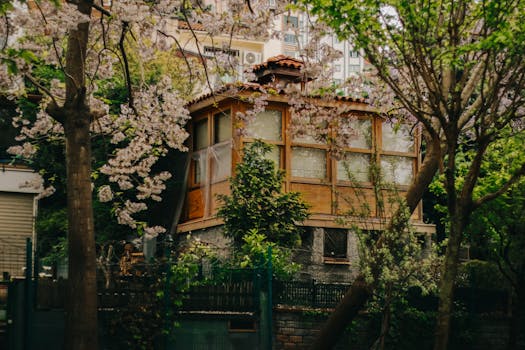
Urban Green Spaces: The Future of Outdoor Living in European Cities by 2025
Urban Green Spaces are becoming increasingly important in European cities, and for good reason. As the world becomes more urbanized, the need for green spaces within cities is growing. Urban Green Spaces are not just aesthetically pleasing, but they also provide numerous benefits for both the environment and the people living in these cities. In this article, we will explore the future of outdoor living in European cities and how urban green spaces are shaping it.
What are Urban Green Spaces?
Urban green spaces refer to any area within a city that is covered in vegetation, such as parks, gardens, and green roofs. These spaces can be public or private and can range in size from small backyard gardens to large urban parks. Urban green spaces are important because they provide a range of ecosystem services, including air purification, climate regulation, and noise reduction.
Benefits of Urban Green Spaces
The benefits of urban green spaces are numerous. Some of the most significant benefits include:
- Improved Air Quality: Urban green spaces can help to purify the air by removing pollutants and particulate matter.
- Climate Regulation: Green spaces can help to regulate the climate by providing shade, cooling the air through evapotranspiration, and reducing the urban heat island effect.
- Noise Reduction: Urban green spaces can act as a buffer against noise pollution, reducing the impact of traffic and other urban noise sources.
- Improved Mental Health: Spending time in nature has been shown to have a positive impact on mental health, reducing stress and anxiety.
- Increased Biodiversity: Urban green spaces can provide habitat for a range of plant and animal species, increasing biodiversity and supporting ecosystem services.
The Future of Outdoor Living in European Cities
As we look to the future, it is clear that urban green spaces will play an increasingly important role in shaping the outdoor living experience in European cities. By 2025, we can expect to see a range of innovative and sustainable green space designs that prioritize both environmental sustainability and human well-being.
Some of the trends that are likely to shape the future of outdoor living in European cities include:
- Increased Use of Green Roofs and Walls: Green roofs and walls are becoming increasingly popular in European cities, providing insulation, reducing energy consumption, and creating habitats for wildlife.
- Integration of Technology and Nature: We can expect to see more innovative uses of technology in urban green spaces, such as smart gardens and urban farms, that combine nature and technology to create sustainable and productive spaces.
- Community-Led Green Space Initiatives: Community-led initiatives are becoming increasingly important in European cities, providing opportunities for citizens to come together and create their own green spaces.
- Priority on Accessibility and Inclusivity: The future of outdoor living in European cities will prioritize accessibility and inclusivity, ensuring that green spaces are accessible to all members of the community, regardless of age, ability, or socioeconomic status.
Conclusion
In conclusion, urban green spaces are the future of outdoor living in European cities. As we look to 2025 and beyond, it is clear that these spaces will play an increasingly important role in shaping the sustainability, livability, and resilience of our cities. By prioritizing the creation and maintenance of urban green spaces, we can create healthier, more sustainable, and more livable cities for all.






